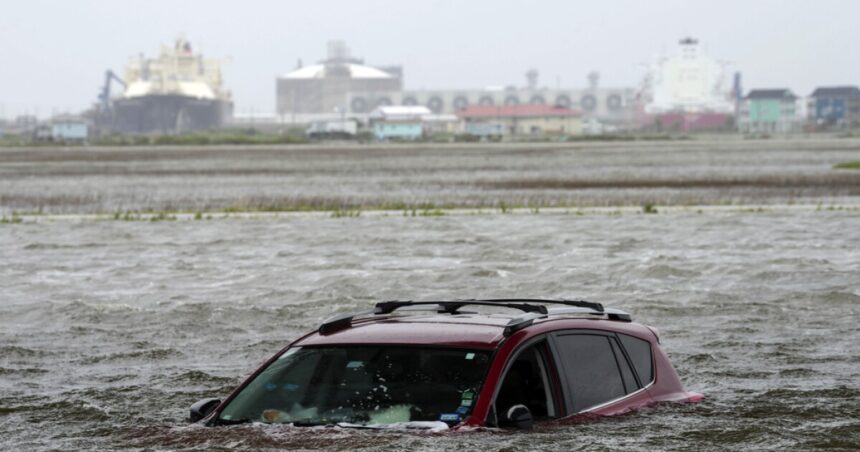Tropical Storm Alberto moved towards northeast Mexico early Thursday as the first named storm of the season, bringing heavy rains that resulted in three fatalities but also bringing hope to a region grappling with a prolonged drought.
Mexican authorities played down the risks associated with Alberto and instead were optimistic about its potential to alleviate the region’s water scarcity.
“The wind speeds do not pose a significant risk,” stated Tamaulipas state Secretary of Hydrological Resources Raúl Quiroga Álvarez during a news conference on Wednesday. He encouraged people to welcome Alberto with open arms. “This is what we have been waiting for in Tamaulipas for the past eight years.”
Most of Mexico has been facing severe drought conditions, particularly in northern Mexico. Quiroga highlighted the low levels of the state’s reservoirs and Mexico’s substantial water debt to the United States for their shared use of the Rio Grande.
“This is a positive development for Tamaulipas,” he added.
However, in Nuevo Leon state, authorities reported three fatalities due to Alberto’s rainfall. One man died in the La Silla river in Monterrey, the state capital, while two minors succumbed to electric shocks in Allende municipality. Reports indicated that the minors were riding a bicycle in the rain.
Nuevo Leon Governor Samuel García announced the suspension of metro and public transportation services in Monterrey from Wednesday night until midday Thursday until Alberto had passed.
As of late Wednesday, Alberto was positioned about 40 miles east of Tampico, Mexico, and 250 miles south-southeast of Brownsville, Texas, with maximum sustained winds of 50 mph, according to the U.S. National Hurricane Center. The storm was moving west at 13 miles per hour.
Alberto was causing rainfall and flooding along the Texas coast as well.
Residents in Mexico were hopeful that Alberto would bring much-needed rain.
Blanca Coronel Moral, a Tampico resident, visited the city’s waterfront to witness Alberto’s arrival. “We desperately need this water that is finally coming, thank God. Let’s hope it only brings water,” she expressed. “Our lagoon, which is our source of drinking water, has completely dried up.”
Schools in Tamaulipas were closed for the rest of the week due to the possibility of localized flooding.
Up to 5-10 inches of rain was forecasted in certain areas along the Texas coast, with even higher isolated amounts possible, as per the National Hurricane Center. Some elevated locations in Mexico could receive up to 20 inches of rain, leading to mudslides and flash flooding, especially in Tamaulipas, Coahuila, and Nuevo Leon states.
Alberto was causing rain showers on both sides of the border, extending up along much of the south Texas coast and down to Veracruz state in Mexico.
Alberto was expected to rapidly weaken over land and dissipate by Thursday.
Related: As Texas braces for heavy rainfall, here’s how to prepare for extreme weather events





